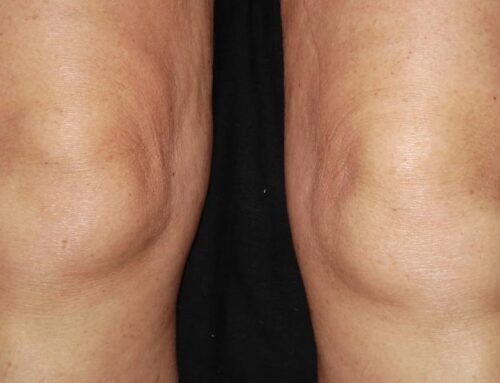If you’re an active person, chances are you may want to see a physical therapist at some point. Many factors go into how likely that might be, but even minor aches and pains can sneak up on the best of us. Thankfully, pain often comes and goes, but if it doesn’t, a physical therapist is there to help. I know, because I am one.
Considering how complicated and confusing our medical system is in the U.S., there’s no doubt that sometimes it’s easier to just endure a little pain or discomfort than book an appointment to figure out what is really going on. And depending on your insurance status, your financial means, and your location, it may not be feasible for you to drop in for an appointment at the first sign of discomfort. But for those who are curious about physical therapy or for those who are experiencing some kind of pain or movement issue and aren’t sure where to turn, I want to set the record straight about what physical therapists actually do and how they might be able to help you.
Physical therapists (also referred to as PTs) are experts in human movement, with a particular focus on the musculoskeletal system and potentially other body systems depending on their area of expertise. Our job is to prevent and treat impairments that affect the body’s ability to move efficiently. Most PTs have completed a four-year bachelor’s degree and a three-plus-year doctorate degree complete with clinical rotations in different settings (outpatient clinics, rehab facilities, schools, fitness centers, and more). A doctorate hasn’t always been required to enter the profession—it’s only been since 2015 that new grads seeking a PT license have been required to hold a doctorate degree—so every licensed PT you come across may not necessarily be a DPT.
There is a time and a place for physical therapy, but physical therapy is usually most appropriate when you’re dealing with an issue that is musculoskeletal (muscles, ligaments, tendons, bones). Certain signs and symptoms indicate when you aren’t ready for physical therapy just yet, like if you have sharp, sudden pain that gets worse with movement; swelling; obvious deformity; or inability to move the body part in question. And if you’re experiencing other health symptoms or complications beyond a musculoskeletal issue, it’s often worth checking in with your primary care provider first.
I’ll explain some of the most common things that PTs can help with, and how to know if you can make an appointment right away or if you should talk to another provider first. Here’s how to know if seeing a physical therapist might be right for you.
Common reasons to see a physical therapist
The most common reason people see a physical therapist for care is to address pain or a potential injury that’s inhibiting their ability to move and exercise normally. Rena Eleázar, P.T., D.P.T., S.C.S., C.S.C.S., cofounder of Match Fit Performance, tells SELF that a physical therapist will help you set goals to overcome your injury/discomfort and come up with a plan to achieve them. They will use different exercises, activities, hands-on therapies (such as massage), and other tools to help you get there.
For example, when you first see a physical therapist for pain, they will do a full assessment to identify postural deficits and observe your movement patterns, as well as test your muscle strength and joint range of motion in the painful area and in the surrounding muscles and joints. All of this is to help them identify any limitations you have that may be contributing to your pain. From there, they can create a unique treatment plan that focuses on improving strength and mobility where you need it, and reducing any pressure and pain that may occur at certain joints.
As you move through your program, your physical therapist will also teach you what to pay attention to and how to be mindful and listen to your body. This educational component, which is so critical to physical therapy, can help promote the best environment in which to heal while teaching you ways to avoid injury and pain in the future. They’ll also let you know when they think you should be evaluated by a doctor and potentially go in for imaging (MRI, X-ray) to make sure a more serious injury isn’t at play.
Another common reason people head to physical therapy is for rehabilitation after a surgery, usually with a prescription from a doctor. Whether you have had a microdiscectomy (for a herniated disc), ACL reconstruction, arthroscopic rotator cuff repair, or any other type of orthopedic surgery, you will be strongly encouraged (if not required) to participate in guided rehabilitation with a physical therapist. The post-op rehabilitation process can begin as early as the same day of surgery and last as long as six to 12 months depending on your surgery and goals. Your PT will work with you to support your recovery so that you are given medical clearance to return to doing the things you love.
While many people end up in physical therapy because they are hurt and experiencing chronic or acute pain, PTs deal with more than rehabilitating injuries. “Contrary to popular belief, you don’t have to be injured or have surgery to see a physical therapist,” Eleázar says. For example, physical therapists are also great resources for new exercisers or those starting to work out again after taking a hiatus, Eleázar says. A PT can assess your current fitness level and mobility and then create a personalized program, focusing on your mobility constraints and imbalances, to help you learn and get comfortable with basic movement patterns so that you have a base upon which to progress your exercise routine safely. Throughout it all, they will work to target and improve any strength and mobility deficits you have and address any pain or discomfort as it arises.
For some people, seeing a PT every once in a while could function like a quick tune-up. Peter Hwang, P.T., D.P.T., owner of Reset Physical Therapy, tells SELF that you could check with in a PT for a number of reasons, such as when you’re having pain with activities that you normally would not (i.e. walking, running, weight lifting, etc.); chronic, recurring, or episodic pain; or if you’re looking to get active again after pregnancy or surgery. But he, like many other physical therapists, also believes a person can benefit from seeing a PT twice a year for a movement assessment, just as you would see a dentist for your regular cleaning. This gives them a chance to help improve your movement patterns and ultimately prevent injuries. (You can read more here about physical therapy as preventive care and how to know if it’s right for you.)
When to see a primary care provider first
If you are in extreme pain, have an acute injury, or cannot function properly (you can’t walk or lift your arm or or otherwise so inhibited you can’t move throughout daily life), definitely see an M.D. They can refer you to a specialist, request imaging, or determine if you need surgical or nonsurgical medical interventions. For example, when a ligament or muscle is torn, an MRI may be critical in determining the plan of care. You should be assessed by the appropriate doctor who can then refer you for imaging and go over the results and their implications with you. After that, they will likely suggest physical therapy, or you can ask if it would be appropriate as part of your treatment.
Jennifer Solomon, M.D., a physiatrist and sports medicine doctor at the Hospital for Special Surgery (HSS) in NYC, refers patients to physical therapy frequently. Both PTs and MDs agree that working together is the most effective. Dr. Solomon and Megan Crawley, M.S., A.T.C., work closely together at HSS, often sending patients to physical therapists and other exercise specialists to help them safely and effectively improve strength, mobility, and body mechanics. Crawley and Dr. Solomon explain: “Physical therapy can be extremely helpful—and in many cases, paramount—in treatment plans.”
Crawley notes that when they refer patients to physical therapy, it is critical that the PT and MD share the same treatment philosophy and that the PT knows and is compliant with the MD’s therapy prescription. “Communication with the treatment team is of utmost importance,” she says.
Making an appointment
With our health-care system being what it is (a bit of a mess) and multiple barriers in the way of accessing it, getting the care you need can feel like a long, tedious process. Most people assume that you need to schedule an appointment with your primary care doctor first, then they can either refer you for imaging or to a specialist such as an orthopedist or sports medicine doctor. Once there, you may get a referral to begin physical therapy. But by then it’s been over a week (or multiple weeks), you’ve had to rearrange your work schedule to make every appointment, and your pain has either gotten worse or stayed the same because treatment hasn’t even begun.
While seeing an MD may be critical in some cases, know that there is another option that allows you to skip the co-payments and multiple appointments with different practitioners. In many states, depending on the direct access laws of that state, you may not need to see an MD or get a prescription to schedule your first physical therapy appointment.
In New York, for example, patients can go directly to a doctor of physical therapy (no referral or Rx required) for the first 10 visits or 30 days, whichever comes first. This means you don’t have to wait for anyone to tell you when to go, but you should know when it’s appropriate to skip the visit to your MD. If you’re unsure, then don’t—it’s always best to err on the side of caution. But if you’re feeling pretty good overall and just want to take care of a minor pain or ask some questions, you can go directly to a PT. (Also, a good PT will tell you after their initial assessment if they think you should go see a doctor first.)
We physical therapists hope that people will begin to see physical therapy as a necessary and tremendously helpful part of maintaining a healthy lifestyle. Eventually, we hope people will come to physical therapy for an annual checkup, so that we can spot dysfunction before it becomes painful and problematic.
For now, just know that physical therapy can help reduce many types of aches and pains and fix your imbalances, and it can also help you better understand your body and prevent future pain and injuries, helping you to stay active and enjoy the activities you love.



